It’s been nearly two months since my article about the Coronavirus pandemic and preemptive measures we took in Prusa Research. During these two months, we learned how to live with face masks, how to keep our work pace with all the new statewide regulations, and above all: how to stay safe. And we managed to donate more than 130.000 face shields to frontline staff.
In the past weeks, I met an incredible number of wonderful people and amazing companies, helping unanimously in these dark times – many truly inspiring individuals and firms. And I’ve been asked many times about the precautions we took in Prusa Research – there were websites which mentioned us in the news and we published this blog post about safety measures. Over time, we got more questions and I see why – not everyone can dedicate an entire team of people for research of precautions and measures like we did.
A good pointer for me is my dad, who has a furniture store in a small town not far from Prague – this allows me to see how smaller local companies handle things. It’s a slightly different world. After all, we’ve got people from all over the world in Prusa Research – from the USA to Asia. So I decided to sum up everything we learned over the past few months, look back at what we have already done and share what’s next for Prusa Research. We’re, of course, no epidemiologists, all our precautions and measures are based on information shared by experts.
I work with the assumption that this will be a marathon, not just a few days of discomfort. In other words: I don’t think we’re out of the woods yet. Please, everyone, no matter where you live and work: be cautious. It may look like the virus is less threatening nowadays and there’s nothing stopping us from getting back to our regular lives, but this may take a sudden turn for the worse again. Keep a safe distance from others, wear a face mask inside buildings and in public transport and avoid places with a large concentration of people. In some countries, the second wave of COVID19 is already a reality. We know very little about the virus and its long-term effects. I hope I’m wrong and the situation won’t be as bad, but it’s much better to be prepared.
This is why it’s important to set rules that are sustainable in the long run. In other words, and pardon the expression: they’re not a pain in the butt 🙂 Nobody is going obey strict authoritative commands for long, though. Including me 🙂
So there’s a general rule for everything we do here: it’s very important to tell people WHY they are required to do certain things. “Because I said so” is the wrong answer. When we put several precautions into effect weeks before the pandemic started, people understood why it’s happening and nobody thought we’re doing unnecessary fuss about the situation.
We divided the measures into three categories:
- How to keep COVID19 away from the company
- How to prevent COVID19 from spreading in the company
- How to help our team against the infection outside
How to keep COVID19 away from the company
Body temperatures measurements
Something really basic, but very important – even after the COVID19 pandemic is gone. We bought a thermal camera and installed it next to the security gate. Sure, it’s an expensive solution, however, before we installed it, we simply asked our employees to measure their body temperature individually at home using a thermometer. Both solutions are very effective. Of course, it’s not a 100% bullet-proof solution, but it works well. So if an employee going to work has a body temperature of more than 37.3°C, we kindly ask them to stay at home until they get better. People sometimes feel the need to go to work when they have, for example, the flu – and this is a good way to prevent them from working when they should be resting.
Closed for visitors
We’re not allowing anyone except for our team to enter the building. All pickups are done at a safe distance on the company’s premises. We were slightly afraid of this option, however, there were no negative effects. Not everyone can afford to do the same thing, shops/showrooms are in a completely different position here. However, if your business allows it, go for it. Which brings me to…
No meetings outside the company
A vast majority of meetings can be held online – video call, e-mail,… I can imagine we will stick to this policy in the future. I feel that a business lunch is a somewhat outdated concept. Efficiency is more important than form.
Plexiglass at the reception
One of the first steps we’ve taken. We did it despite the fact we’re closed for public anyway, so it may look like it doesn’t have any effect right now, but the opposite is true. Our employees still go to the reception to pick up personal packages, forgotten ID cards etc.
HR / Hiring
We’re one of the few lucky ones and we keep growing even in these difficult times – and we need more people in our team. Here’s an effective solution: The first round of the interview is done over Skype, the second round in a rented tent next to our building, which allows us to maintain the recommended distance between people. Then a required COVID19 test (paid for by the company) and that’s all. Although it may look a bit unorthodox at first, it shows the will to adapt and improvise.
How to prevent COVID19 from spreading in the company
Everyone wears a face mask
No exceptions. I was really surprised to learn that this is not a widely used thing. But I guess it’s just some sort of misunderstanding – by wearing face masks, we protect each other. Truth be told, we’re not used to face masks in our country, unlike some other countries like Japan. And nobody has any health issues caused by wearing them (which seems to be a common excuse why not to wear them).
So be considerate to others. It’s perhaps a tiny bit uncomfortable, but it’s not limiting in any way and it’s a simple, yet effective way to protect each other from catching something – even if you have just a common cold. Wearing a face mask is something I would prefer to become a commonplace, not just an “annoyance during a pandemic”. The collective mindset will have to change, though. I still remember how going to school when being sick was considered commendable because you’ve shown your interest in education. Yet a week later, everybody was sick – including the teacher.
Pauses between shifts
Where possible, we have a 30-minute break between shifts. It gives us time to disinfect the workplace and two teams don’t meet in the locker room and at the entrance. If someone gets infected, not everyone will have to be quarantined. This measure costs next to nothing.
Workplace separation
When employees are in their offices (e.g. sitting at a computer), they don’t have to wear face masks. However, when they move around the building or get within 2 meters from each other, they put them on. Face masks are required in the manufacturing section, where there’s a high concentration of people. Plus, we’re starting to add plexiglass panels to separate workplaces. Every extra layer of protection counts.
HR dept. window
We have created windows in the doors of frequently visited departments – such as HR. It costs pretty much nothing to cut a window in the door. Most matters can be resolved within minutes through the window.
Minimum of internal meetings
We now do internal meetings mostly online and everything still works. It made things somewhat more efficient as the meetings are more to the point. However, sometimes it’s better to speak with others in person, so a simple face mask works well. Or we can go outside – we have a terrace and the weather’s already nice. Another good solution is a good widescreen webcam that can cover an entire room.
Distribution of disinfection
Since the situation is calmer now, it’s also possible to buy disinfectants in stores. However, a couple of weeks ago, they were completely out of stock, so this is why we decided to mix our own disinfectant based on instructions from WHO (we might have been the first ones to do that around these parts). We distributed the disinfection among our crew and they could take it home, too.
We also placed racks with disinfection on each floor – the important part is that they are directly next to frequented paths. Nobody’s gonna use them if they are stuck somewhere in a dark corner away from everything 🙂
Automatic doors / contactless door handles
We have evaluated the locations with the highest flow of people and we installed automatic doors where it’s needed to eliminate “shared surfaces” where more people would touch a single surface, like a door handle. This is a more expensive solution, but there are alternatives – e.g. door handles can be replaced by hands-free door handles, which are operated by your elbow or foot. Or, the most obvious and cheapest solution – keep the doors open where it’s possible.
Copper door handles
Currently, in progress – we will replace regular door handles with copper door handles, which lower the risk of transmission. For now, we disinfect the door handles three times a day.
Contactless faucets and towel dispensers
Since we’re in an older building, there were regular faucets and mechanical towel dispensers everywhere. Replacing them with contactless versions removed many contact areas.
Ozone disinfection
Every night, we disinfect a majority of internal spaces with an ozone generator. This is how e.g. public transport vehicles are disinfected.
Team separation
Teams that are critical for production are separated into smaller groups so they don’t meet.
Home office
Whoever can work from home stays at home. Currently, we’re trying to figure out how to enable these team members to return back to the office safely. Currently, they can come to the office for 2-3 days a week with a limit of 3 people per office. A simple online calendar can help to organize turns.
Free testing and extra health leave
Private tests are already possible, so everyone can be tested once per month at the company’s expenses. No questions asked. We also raised the number of so-called “sick days” from 7 to 15. To put this into context: Everyone has paid sick leave (60 % of normal income) until cured by law here (in Czechia), as it should be everywhere. Sick days are our benefit on top of that, normally for things like a bad migraine. With sick days, you don’t have to think about such things as whether you should go to work if you’re not feeling well – you can simply stay at home because you don’t need a medical diagnosis and you still get full income (and you don’t have to think about meeting targets etc.).
How to help your team against the infection outside the company
Canteen
We share the canteen with another company, so we made an agreement that there will be a specific time slot for our employees. It doesn’t cost us anything and we lower the risk of transmission.
Face masks and respirators
Everybody wears face masks or respirators. We supply our team with them for free and everyone can choose which option works best for them. We have one-time-use surgical masks, washable masks, scarves… Again, we’re trying to offer more options so people can choose the least obtrusive solution. Improves the chances that people will wear them regularly.
Recently, we started handing out FFP2 respirators in numbers which are sufficient not only for team members, but also for their families. They will come in handy in case a second wave of COVID19 hits the country.
Transport – carpooling and bikes
Overcrowded public transport increases the chance of spreading the disease. At the very beginning of the quarantine, I recognized bikes as a great way to get around the city. Together with my friend, Tomas Cupr (Czech entrepreneur and investor), we decided to sponsor a local shared bike project called Rekola, so people could use them for free everywhere in the country for two weeks. We also built a roofed bike rack in front of the building, so people can ride a bike to work.
However, Prague is a rather large city, so not everyone can ride a bike to work. This is why we decided to help organize carpooling / shared car rides. Team members get financial bonuses for driving colleagues to work.
Exhibitions and events
We have canceled our presence at all of this year’s exhibitions, shows, and events. And that was even before the events were canceled by the organizers. We go up to 40 events every year, there’s a group of 10+ going all over the world, all the year. I’m currently leaning towards the decision to skip all events until a vaccine for COVID19 is discovered. In the meantime, we’re trying to bring you extra online content.
Our own hairstylist 🙂
Alright, this is a very specific thing, but it’s pretty awesome and I think it deserves to be mentioned – some of our colleagues are in fact hairdressers. So we set up a small area on our terrace, where you can get a cool haircut. Truth be told, it was needed 🙂 After weeks of quarantine, some of us were starting to look a bit… untidily. And the only hairdresser shops that were allowed to open were those for dogs only. And there’s progress, too! We started with a simple shearing machine, but now we can also do highlights 😉 Sounds a bit crazy, but in the end it’s pretty useful and it strengthened relationships within the team.
Outside sports area
After we celebrated success with our in-house hairdresser’s shop, we decided to tackle another area: an open sky gym. It will be available to our colleagues outside, next to the HR tent I mentioned. This way, people can enjoy some healthy activity without going into a gym, where the risk of transmission might be higher.
I hope that some of you might find this list helpful. We’ve been sticking to these measures for a bit more than two months and mainly thanks to being responsible and cautious, we did not have to put heavy restrictions on our company operations. Feel free to share your own ideas that you put to good use in your companies and inspire others. Together, we’re stronger!






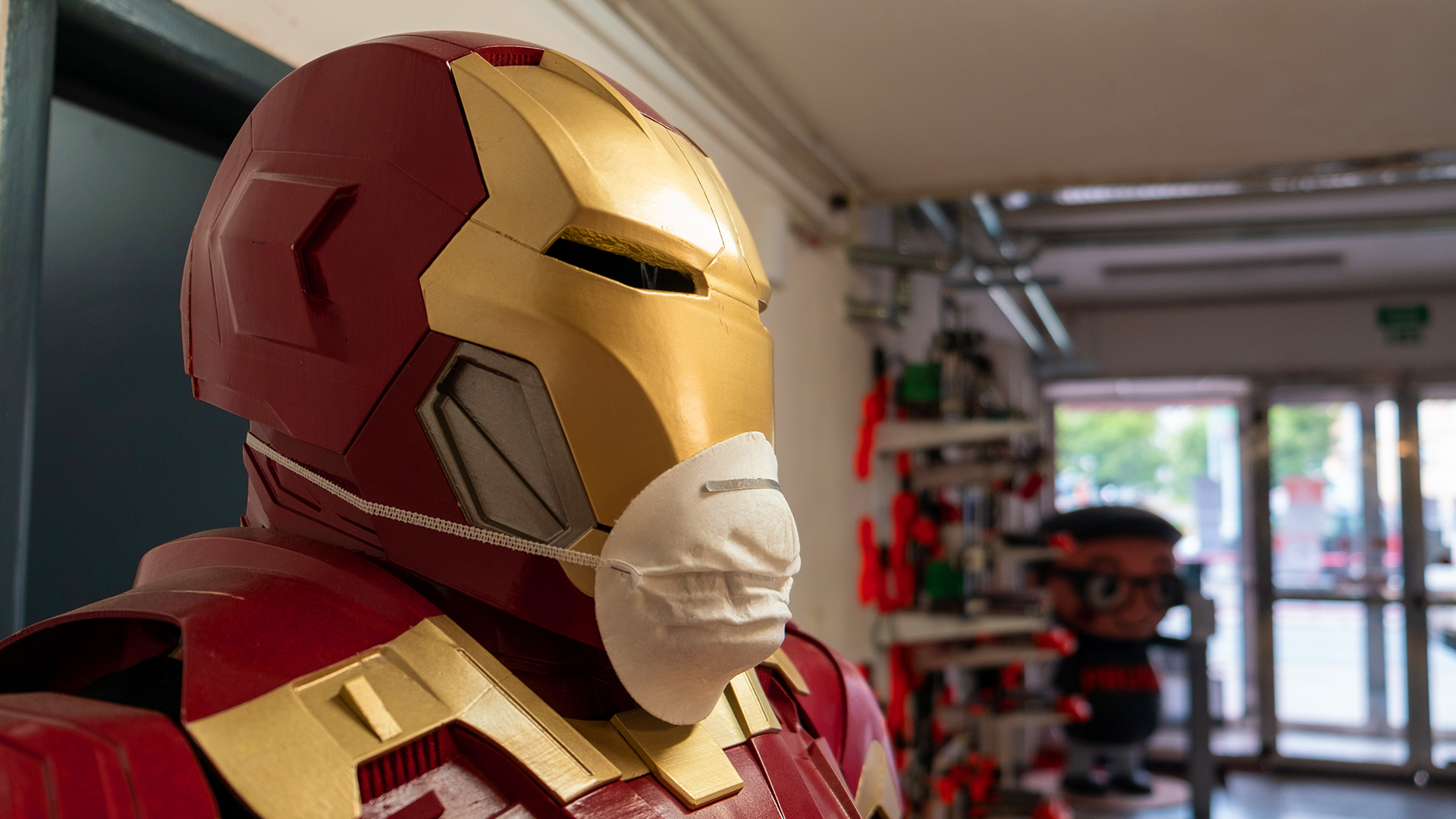
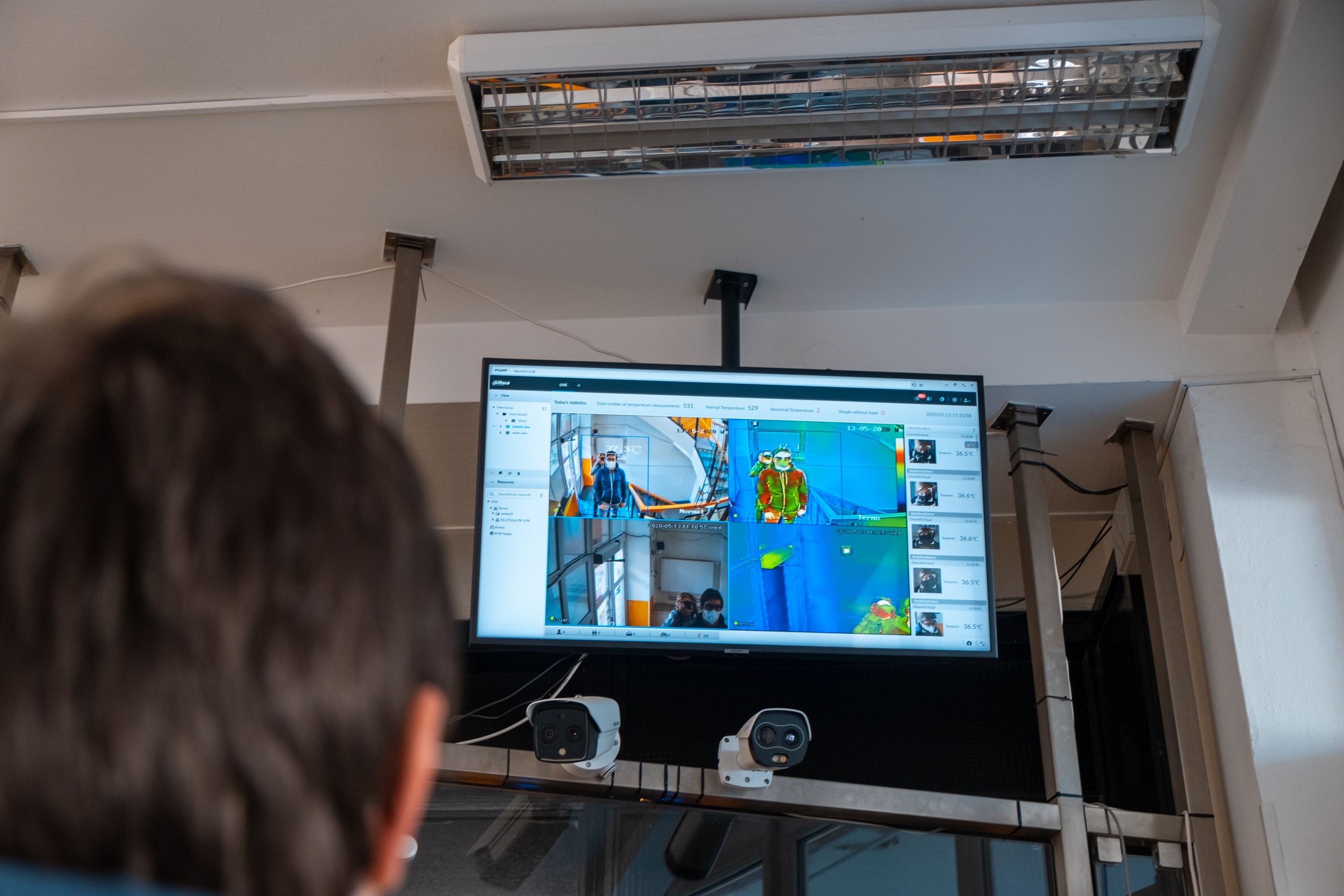
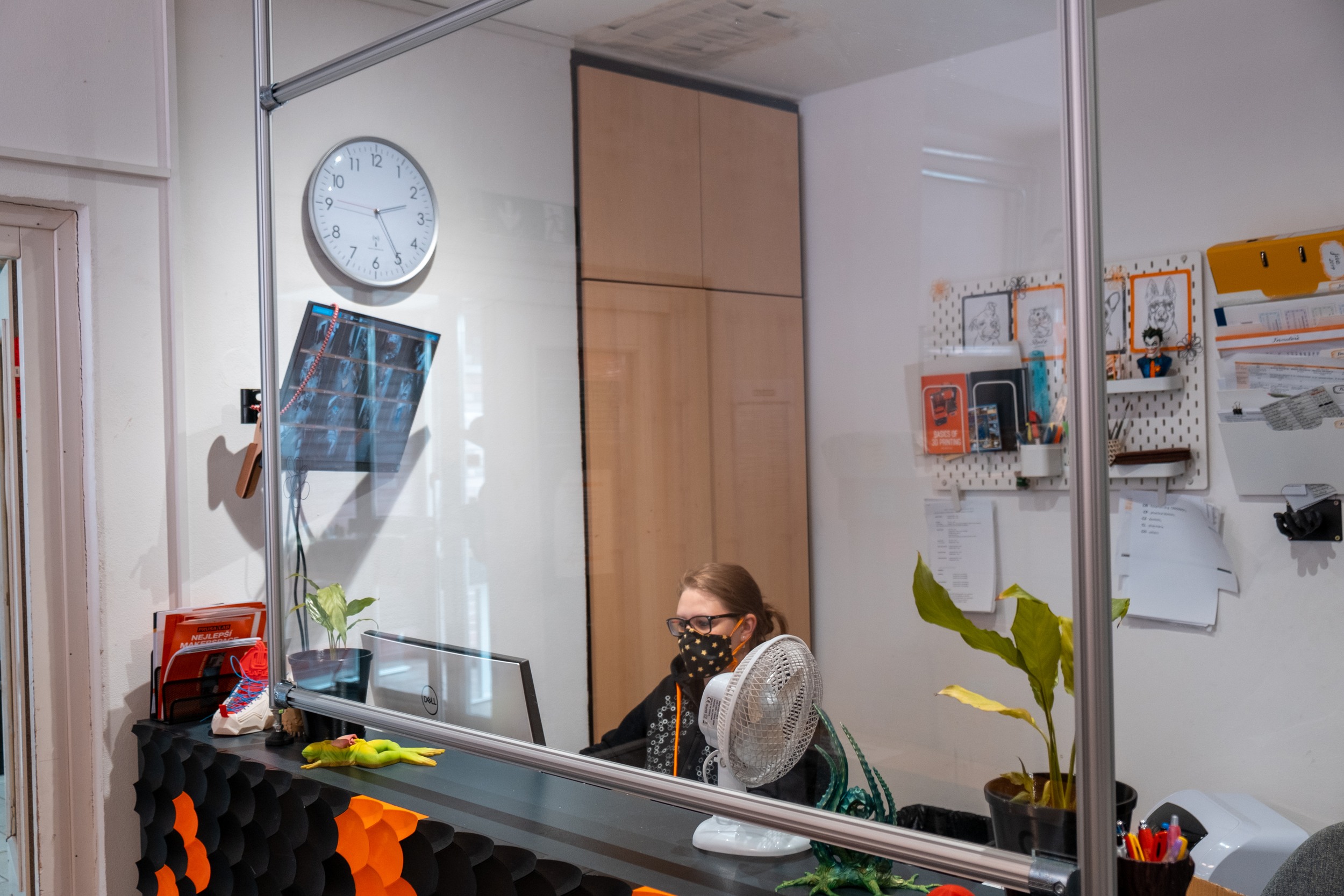
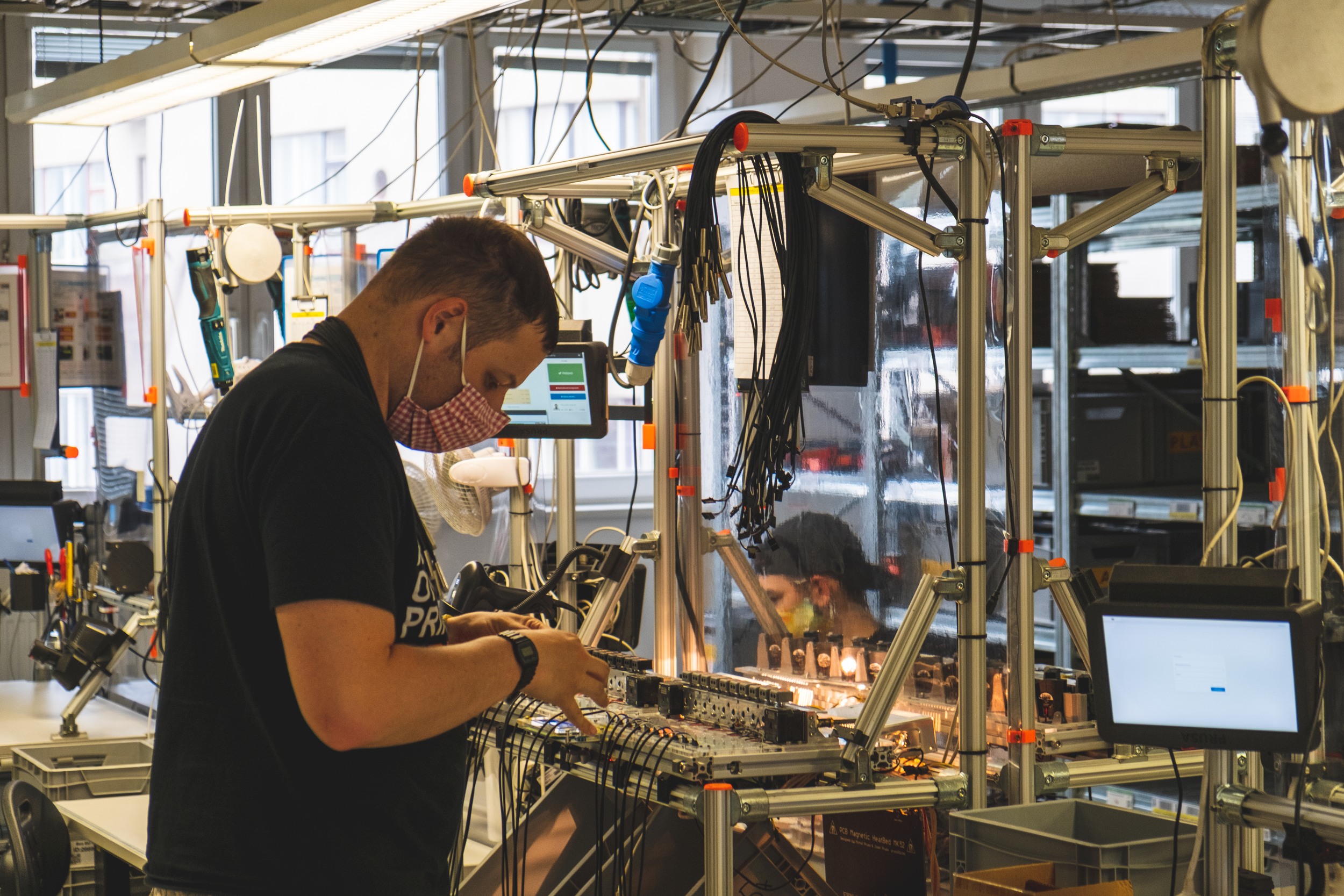
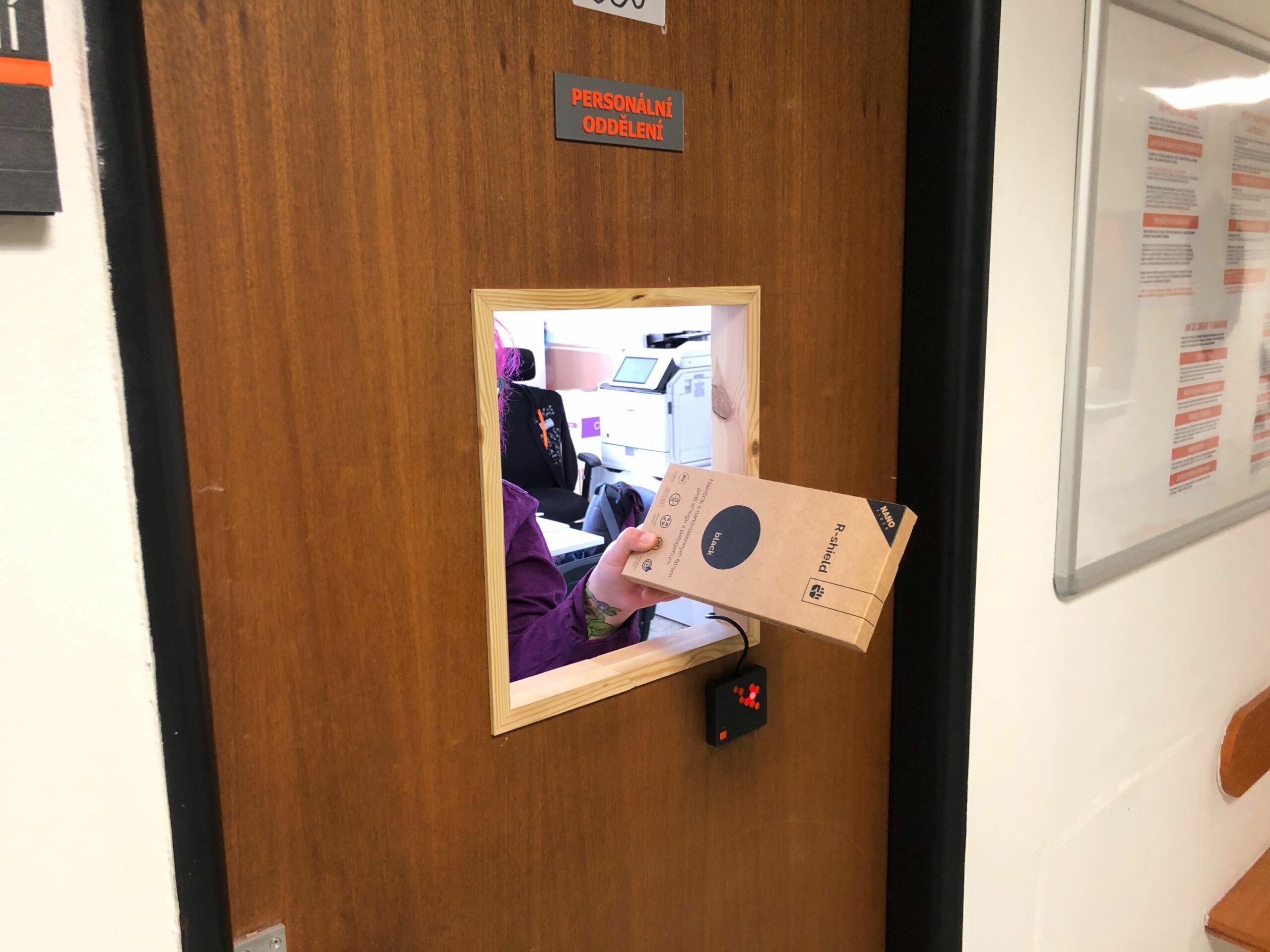
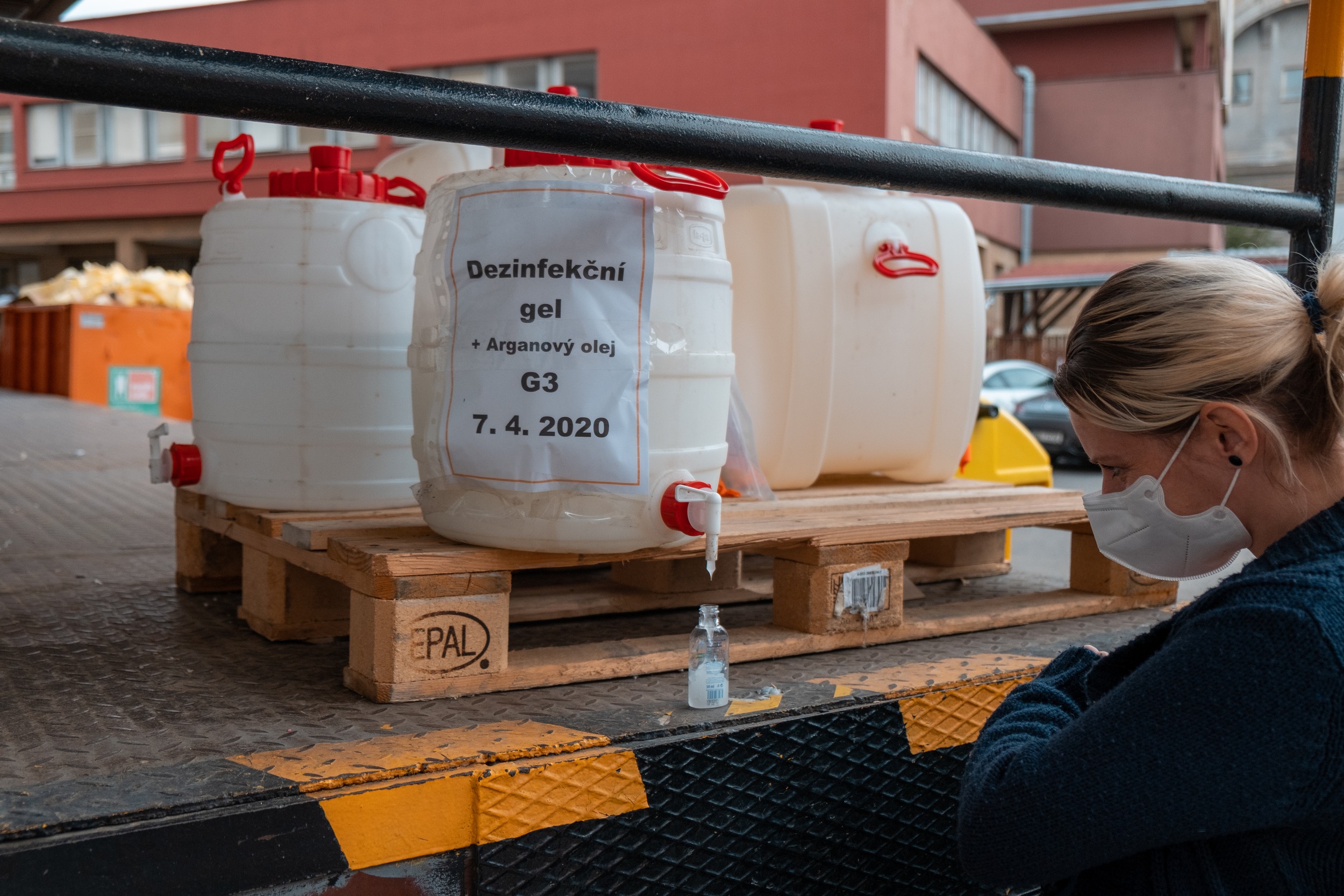
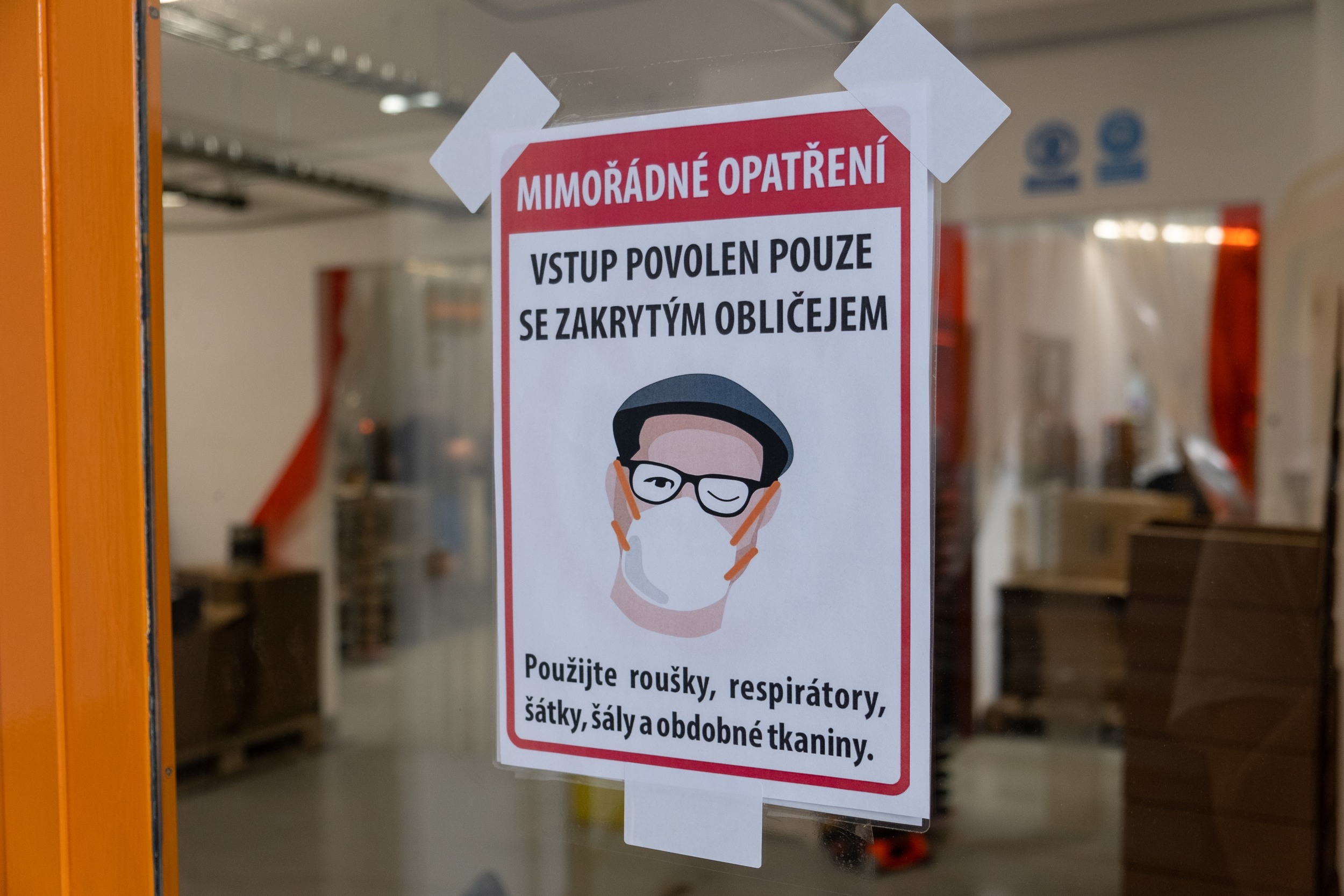
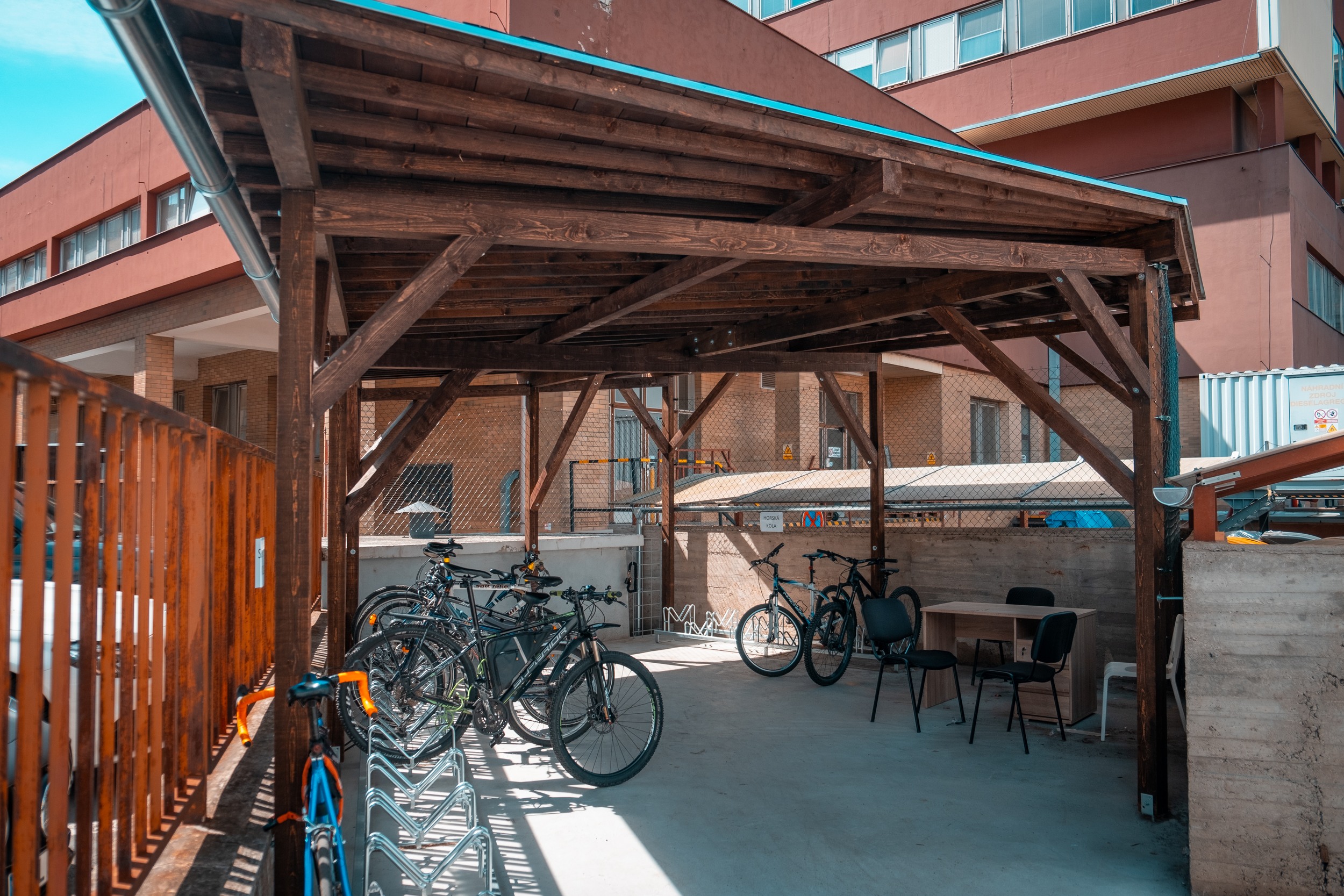
I agree with you concerning the wearing of a mask to mitigate the spread of sickness, or just having the employee work from home until well…if possible. As to the overall effectiveness in comparison to the manner in which Sweden is approaching the same crisis, it will be interesting to compare the results of the two different methods. Being in the age group that has been paired with the higher risk category, I admit that I am a bit defiant of being told by someone else on how I should behave amidst this crisis, specifically when inferring that I don’t care about others is too far over the top and has the unpleasant odor of manipulation. I agree, it is important to take necessary precautions…how those may be defined in the future will give credence to the current actions…if the data is not skewed. That you are a good employer and care about your workers is without a doubt. I am happy to be one of your customers.
such detailed information. I’ll take note.
https://en.wikipedia.org/wiki/Coronavirus
After all, every human being has a right to some rest! And you deserve it, especially if you work, study, and take care of your family at the same time. Why not give yourself a break? Place your order at https://makemypapers.com/ take a deep breath, and enjoy the taste of freedom.
https://www.deepl.com/
Here is some information about Coronavirus, Safety, Services, & more: https://earstohear.net/resources/ConsumerProductAndSafety.html
It’s good site, I was looking for something like this.cosmetic packaging boxes wholesale
very nice publish, i definitely love this web site, carry on it. cosmetic packaging boxes wholesale
This measures would rather end. How you want to live and travel. https://programminggeeks.net
Thank you for continuing to talk about this. In fact, now I noticed that many of us have already stopped following the news, new infections so much and, accordingly, not all, unfortunately, comply with the quarantine rules. I understand that everyone is already tired of this, but in this way, we put ourselves at even greater risk since we forget about security measures. I think that this can lead to serious consequences since in this case, we will not be able to prevent the spread of the virus. Therefore, it is very important to each of us to remind that we are still continuing the fight against the virus and it is too early to forget about it.
https://bestketamineclinics.com/clinics/ketamine-clinics-in-pittsburgh/
very nice publish, I definitely love this site and the author
Are you passionate about new horror games with unique elements? If so, Poppy Playtime will promise to bring new personalities funny stories to create an impression. You will be the one to participate in this horror adventure on your own, and you will discover many mysteries in the dark corner. The game provides you with a series of practical features so that you can uncover those horrifying truths. Be a brave warrior who dares to face all challenges and meet the game’s requirements.
If you love “99%” and want to play, the Five Nights at Freddy’s version the most suitable, please visit the link here Five Nights at Freddy’s.
As a marketing professional, I find the insights in this article invaluable. Exploring <a href="https://www.linkedin.com/pulse/15-best-semrush-alternatives-review-2023-valerii-khomenko">semrush competitors</a> is crucial for a well-rounded strategy, and the comprehensive overview here makes it a go-to resource for marketers seeking diversified tools.